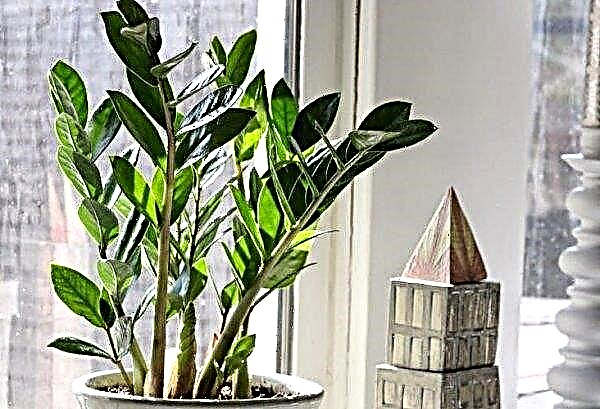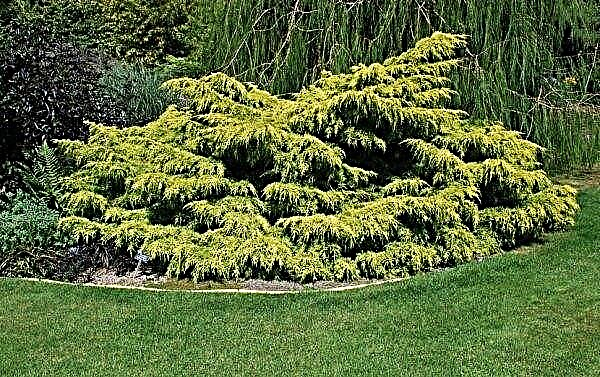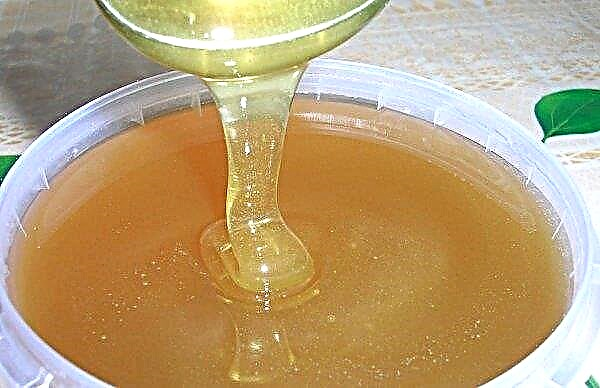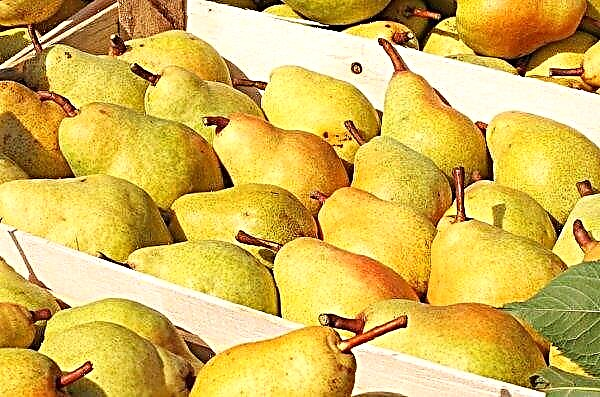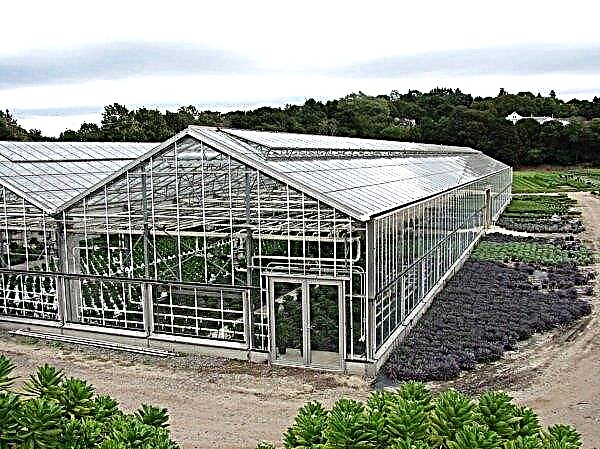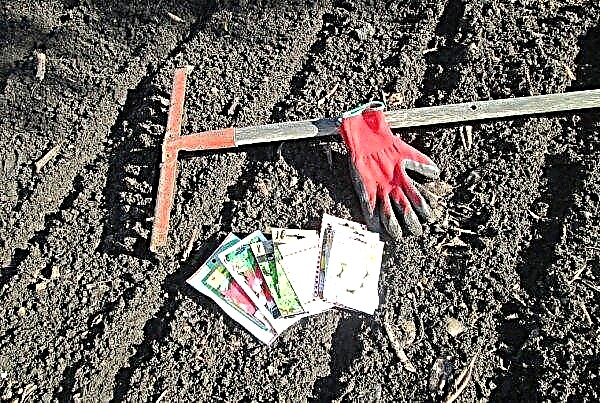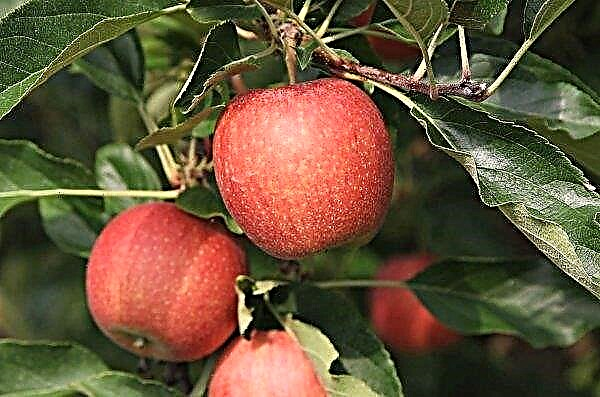Freezing vegetables and fruits is one of the easiest and most affordable ways to harvest them for the winter, so it is not surprising that many housewives choose it also for storing pepper. There are many methods for freezing this vegetable, but most often it is either crushed or frozen whole, which we will discuss later.
Did you know? Red bell pepper is a real storehouse of vitamins and a record holder in terms of the amount of vitamin C. It surpasses even blackcurrant and lemon in this indicator, so it can be used to strengthen immunity during an exacerbation of viral ailments.
Benefits of Frozen Pepper Harvesting
Each method of harvesting pepper for the winter has its advantages and disadvantages, which are definitely worth considering in the situation of choice.
- In the case of frozen pepper, there are undoubtedly more advantages, and above all this:
- saving time during harvesting (nothing needs to be boiled and boiled several times);
- maximum preservation of all the original taste (during the freezing no spices are used, which means that the taste of the frozen product will not change under their influence);
- ease of use in cooking (slicing pepper in small pieces and folding it into separate bags, you can always get exactly as much as you need at a specific time, without using the rest);
- when cooking first courses or stews, vegetables do not need to be thawed beforehand, this process will go along with the initial stage of cooking;
- fruits harvested for stuffing take up little space, so there is enough space to accommodate other products.

As a complement to the already cited advantages of a frozen product, we can recall the common benefits of such blanks. All beneficial substances after a single freeze remain almost the same as in the fresh version, so there is no doubt in the benefits of the fruits.
Which pepper is suitable for freezing
The quality of dishes prepared in winter directly depends on the characteristics of the vegetable prepared for freezing.
When choosing raw materials, be sure to consider the following nuances:
Recommended reading

- fruit size - it is desirable that all vegetables be about the same size and shape, which is not only convenient for freezing, but will also guarantee the uniformity of their preparation after defrosting and stuffing;
- naturalness - the best option for harvesting is seasonal pepper grown in open soil, with a characteristic taste and smell;
- juiciness and meatiness - dry fruits with thin walls are worse prepared and more often crack when filled, so to get a tasty dish in the future, you should choose only fleshy specimens for freezing;
- sweetness - in most cases, the yellow, red and orange fruits are considered the best options for storage in the freezer, while the green look is not so sweet and the ready-made dishes will give a little bitterness.
Do not forget that pepper thawed once is no longer subject to repeated freezing and it is better to cook it immediately. With repeated exposure to the cold, a significant part of the nutrients and the attractive appearance of the vegetable itself will be lost.
Important! If possible, choose only cone-shaped fruits, as they are easier to place in the refrigerator, while saving a little space.
How to prepare peppers before freezing
Vegetables collected in the garden can not be immediately sent to the freezer, at least they need to be washed. As for the full list of preparatory activities, it looks like this:
As for the full list of preparatory activities, it looks like this:
- Cleaning from contamination by washing under running water.
- Removing the core, seeds and inner veins (the remaining light sections of pepper will give the finished dish a certain bitterness).
- Repeated cleaning under running water, this time to remove remaining seeds and cut parts.
- Drying the fruits with a cotton towel or paper kitchen napkins (well-dried vegetables will be better kept in shape when frozen and later separated better).
Important! Do not discard hats cut from vegetables. By freezing them separately, you will get a great decoration for a stuffed dish.
Freezing methods
If you do not delve into the possible nuances of slicing pepper, then there are only two ways to harvest it: whole and sliced. Each of them has its own characteristics, which largely depend on the type of final dish.
In pieces
Vegetable, cut into strips, is an ideal solution for making pizza, stew or first courses, therefore, in this form it is most often frozen.

It is not difficult to prepare raw materials for the freezing process, especially if you follow a clear sequence of actions:
- Put the washed and peeled seeds on a cutting board or tray and allow them to dry (cotton towels will help speed up the process).
- Each specimen is cut vertically into two halves, and then into several parts to make strips no more than 2-3 cm wide.
- Now cut each stripe into strips and fold everything into a separate container.
- Take a few sealed bags (you can on the snake) and pack chopped pepper in them, releasing air as much as possible before closing.
Entirely for stuffing
The preparation of the vegetable in this case is carried out in exactly the same way as in the previous one, but you do not need to cut the peeled fruits.

Instead, you will be required to do the following:
- Take a few ordinary sachets of the type “shirt” and cut them into squares, the size of which will be enough to wrap the blanks.
- Place the nose (pointed part) of each pepper in the center of the cellophane square, and lift its sides so as to cover as large a surface as possible.
- Holding the “wrapper”, place one pepper in the second one according to the principle of folding the matryoshka and repeat the action with another vegetable (it is advisable to add no more than 5–6 fruits in one “pile”).
- Put the finished sets in a separate bag and, having released the air, tie it well. To minimize the likelihood of air getting into the pepper and, as a result, freezing ice on the walls of the bag, it is better to use several bags at once.
- In this form, you can send blanks to the quick freeze chamber, and then place them in other trays of the freezer for further storage.
Did you know? Some properties of pepper resemble the capabilities of other products, in particular chocolate. Like a sweet product, it promotes the release of a large amount of endorphins into the blood, which can improve a person’s mood and general emotional and psychological state.
If desired, the prepared empty vegetable can immediately be stuffed and frozen already in this form, but in this case, be prepared to allocate a significant part of the freezer space under it. In addition, not all housewives respond positively to the taste of thawed filling, so it is better to leave the filling process for the future.
Temperature and shelf life
The ideal temperature at the stage of fruit freezing is -19 ... -32 ° C, but in the future it can be increased to -10 ... -15 ° C. With a sharp exposure to low temperatures, the fruits experience a certain shock, but just such a state allows you to maximally preserve all the useful components inside. While maintaining a stable low temperature in the freezer, frozen pepper will be stored all winter, until the next harvest.

What can be prepared from frozen bell pepper
Frozen bell pepper can be used for all the same dishes as fresh, and in most cases it does not even have to be thawed. Soups, stews, meat and vegetable rolls - this is not an exhaustive list of what can be obtained with the addition of chopped frozen pepper, not to mention the preparation of stuffed vegetables using whole fruits.
In the latter case, the space for creativity is also unlimited, because you can not only stew, but also bake pepper, the filling for which will be either meat or purely minced meat. Simply put, frozen bell pepper is really a great winter harvesting option, which, with all its culinary advantages, will save you cooking time. Agree, this is more than enough to use the given freezing recipes.




